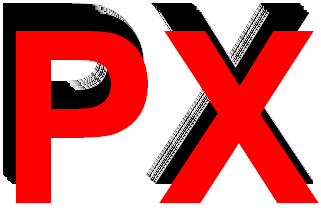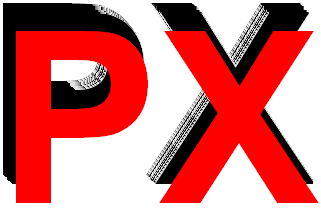The Media Offensive: Injecting Lies and Misinformation
- By Poetry X
- 10 February, 2015
- No Comments
“If you’re not careful, the newspapers will have you hating the people who are being oppressed, and loving the people who are doing the oppressing.”
– Malcolm X
A key factor on how the United States interest groups control the agenda around most of the world is the media, specially when it comes to war. The notion of the media in the U.S. and Europe is not the best, yet, our understudying of it is rather benevolent. For example media in Latin American is categorically controlled by the commercial and banking elites with few or no restrictions on their activities. For example, 85% of the media in Venezuela is private and they openly play an opposition role – the two major newspapers in that country are el Nacional and el Universal, both of them deeply opposed to any government the are a threat to their interests [VTV Feb 12-2015]. As we should know, given by the principles of Joseph Goebbels on controlled news, they basically repeat any given information over and over again to control the passions of the people [Boron Apr 8-2012].
In this mission of controlling information for interest groups, one of the main players is the Rendon Group, a public relations firm that has assisted a number of U.S. military interventions in nations like Haiti, Kosovo, Panama and Zimbabwe. Among the most prominent missions of Rendon we have the organizing the Iraqi National Congress, a public relations front group designed to foment the overthrow of Saddam Hussein. John Rendon, company founder and head, has called himself “an information warrior, and a “perception manager.” This company, purportedly, has provided “communication services in more than 78 countries, and maintains contact with government officials, decision-makers, and news media around the globe,” always implementing the U.S. agenda [Stripes Aug 24-2009]. It is estimated that the Rendon group received more than $56M from the Pentagon since September 2001 up to 2005 [CorpWatch Nov 13-2005].
One case on point of media control is the Otto Reich’s White Propaganda legacy, that is dedicated to implant propaganda to advance the U.S. agenda [RT Nov 4-2010]. This mission came from the Office of Public Diplomacy (OPD) dedicated to manipulate politics in South America. They planted “their” news throughout newspapers like the Wall Street Journal, the Washington Post and the New York Times. It is known, back in time the OPD even created a story that amounted to a false flag when reporter Fred Francis at the NBC Nightly News presented fake information to scare the U.S. public about the danger of the Sandinistas in Nicaragua. On top of that, this department also surveilled, harassed, and intimidated non-compliant journalists [List Verse Jan 15-2015]. However, this shouldn’t be a surprise since the CIA infiltrated 400 journalist in the main stream media on the 70’s to control the public perception [NY Times Dec 27-1977]. The most obscure aspect of these programs probably was the Operation Mockingbird [ForeignAffairsIntelligenceCouncil Feb 25-2021]. It seems this kind of operations are still in practice of the U.S. agenda when we see outlets such as CNN, Fox and New York Times with anchors and expert guests that have worked for arm contractors and even for the CIA [RT Feb 1-2015].
In addition, there’s no other more prominent media group in Latin America than the InterAmerican Press Society (SIP). It is an organization integrated by the owners of the main newspapers in Latin America – all of them private. The SIP is composed of 1,300 affiliated publications, with a circulation total of over 43M copies on paper and growing on the Internet. The SIP has worked multiple times with the CIA. Therefore it’s not strange that the private media in Latin America never went against dictatorships protected by the U.S. but on other hand, they have been an integral part of destabilization in countries not aligned with the U.S agenda.
There is a triangle of opinion management regarding media in Latin America that is coordinated between Madrid, Bogota and Miami that pull all of the rest of media to synchronize their message to spread it to the public [VTV Feb 12-2015]. The power of the press is probably at the moment the most important component of destabilization agains not aligned governments, since nowadays the U.S. is unable to pull an effective military coup in most of Latin America as on the old days. For example, the 2002 Venezuela coup was described by their own perpetrators as a media achievement. However, for the first time in Latin America, this coup in Venezuela was overturned by massive protests against the U.S. implanted leaders, the people reacted in a strong manner and put President Chavez back in power. However, right after Chavez went back to the presidency, the three major groups of Latin American newspapers committed to publish one daily page against the Venezuela government in their 82 affiliated newspapers [Patria Grande Mar 11-2014]. In plain numbers, this smear campaign is even stronger than the campaign implemented by the U.S. to be able to enter World War II [CorreoDelOrinoco Nov 11-2014].
Due to this shameless role of media in Latin America, some governments have tried to regulate it. For example, during her presidency, Cristina Fernandez in Argentina started a move to regulate their media, but in no time, international organizations crushed any attempt. Also, Ecuador during the presidency of Rafael Correa tried to implement a legislation for media. In no time, Andiarios (Colombian Association of News and Media Editors) managed to publish the very same article in 53 different editorials at the same time “is this the final shot to freedom of speech in Ecuador?” (“¿La estocada final a la libertad de prensa en Ecuador?”) This proves that media and media organizations in Latin America are deeply colluded and ready to apply synchronized responses to any threat to their privileges [El Comercio Jun 19-2013].
The media wouldn’t have so much power if hadn’t been for the support they enjoy from recognized organizations. In this regard, we must knowledge two organizations: Human Rights Watch (HRW) and the Inter-American Commission on Human Rights (IACHR). In the case of the IACHR along with the Inter-American Court of Human Rights, is one of the bodies that comprise the inter-American system for the promotion and protection of human rights across the continent. The court is located in San José, Costa Rica but strangely enough, the commission’s headquarters are in Washington D.C. This is ironic since the U.S. has not signed the this treaty, yet they can host the IACHR. This system for human rights is composed by 8 bodies, but the body for “freedom of speech” has its own funding which comes directly from the U.S. which obviously causes a big conflict of interests. Furthermore the budget for this body exceeds by far the funding for the other 7 bodies. This organization has been key in demonizing left leaning governments. For example, there were more claims at the IACHR against the Ecuadorian President Rafael Correa than the Pinochet dictatorship had.
The other organization, HRW, is highly regarded as a dependable organization and has a powerful influence in the U.S. government, however, it has a nefarious record when its decisions could affect the U.S. war agenda. For example HRW board of directors is composed by personalities like NATO’s former secretary general, Javier Solana, or on its staff of advisors HRW hired CIA analyst Miguel Diaz. One particular case is that During the conflict with Syria, HRW Executive Director Kenneth Roth posted a series of tweets encouraging President Obama to strike that country. To make matters worse, during democratic destabilization events and coups, HRW has refused to condemn the coup plotters. Most demonstrably, during the 2004 coup in Haiti, HRW was absent at every step of violations against the democratic order [Alter Net May 12-2014].

 Copyright © 2024
Copyright © 2024
Leave a Reply